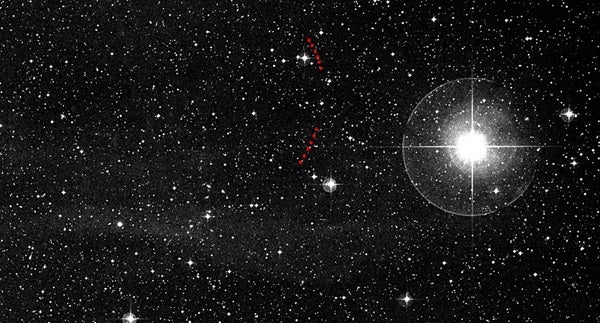Pluto is remote, orbiting at a distance of between 2.7–4.5 billion miles (4.4–7.3 billion kilometers) from the Sun. For that reason, even the best images made using the Hubble Space Telescope can only pick out features larger than a few hundred kilometers in size on a world itself just 1,400 miles (2,300km) across. The dwarf planet rotates every 6.4 days, so researchers also observe Pluto using ground-based telescopes looking at how its brightness varies to deduce whether light or dark features are facing Earth and hence construct maps of its surface.
Whitelaw and Greaves adopted a new approach using data obtained from the James Clerk Maxwell Telescope (JCMT) on Hawaii in the late 1990s. JCMT’s SCUBA cameras operate in the submillimeter range of the spectrum, between far-infrared and microwave. Pluto was observed at 0.85mm wavelength, meaning the waves are about 1,000 times as long as our eyes can see and in a completely different region of the spectrum to any other data ever obtained from this distant world.
The two scientists assembled a “light curve,” where brightness is plotted against time. As Pluto is rotating, the data points correspond to different longitudes on its surface. The 0.85mm waves are emitted from beneath the surface of the dwarf planet as seen in visible light, hinting at a different chemical mix in the subsoil. One possible explanation is that a relatively dry layer of frozen nitrogen and methane lies below a dark surface patch of water ice and frozen polymers. Because Pluto’s surface slowly boils away in sunlight (eventually removing the dark patch), this also gives scientists a sneak preview of its appearance thousands of years in the future.
As well as their forensic analysis of Pluto’s past and future, the new results show a hemisphere of the dwarf planet that New Horizons will miss seeing in detail. The spacecraft zooms through the Pluto system on July 14, 2015, but only has a few minutes to study one side of the dwarf planet and its largest moon Charon at close range.
“This was a bit like using a telescope as a digger to mine into Pluto, but with less effort,” said Greaves. “ I’m really excited to see what New Horizons will find a year from now. Some researchers think that even deeper down, Pluto has liquid water, kept fluid by remnant heat from a big crash that formed its moons. If so, the surface will probably look wrinkled. But the flyby is so quick that we’ll need to follow up — maybe with future radar we can dig down even further.”
The new Atacama Large Millimeter/submillimeter Array now operating in Chile works at similar wavelengths and may be able to peer into the other icy dwarf planets discovered in the last decade.










